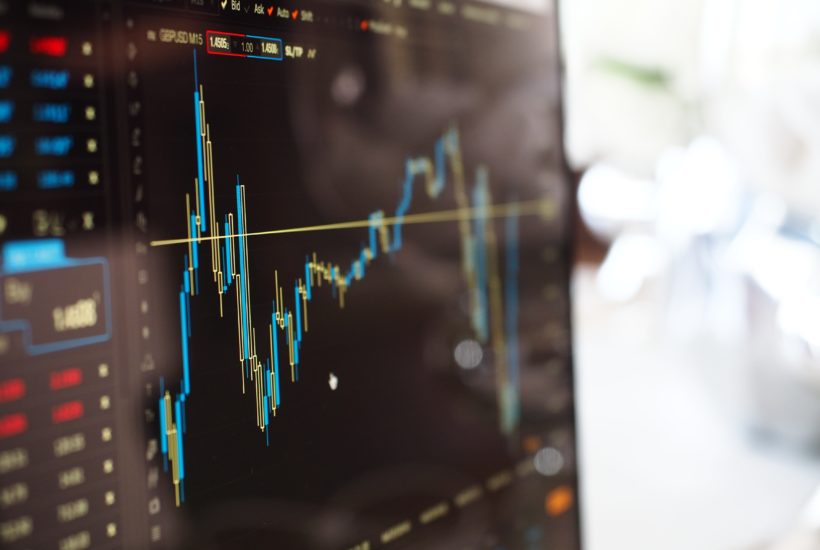Business
Does Algorithmic Trading Really Work for Individual Traders?
There are many questions about algorithmic trading. Is it safe? Is it profitable? Do algorithms fail? Since algorithmic trading does not require separate configurations at every stage, traders can leave it on autopilot and get on with their life. It does not demand full-time attention from people who want to trade. In this article we address all those questions and more.

Table of contents:
- Does Algorithmic Trading Really Work for Individual Traders?
- What is algorithmic trading?
- Why algorithmic trading works for retail traders
- Human sentiment
- Save time
- Managing risks
- Trading speed
- Incorporating tech in trading
- Conclusion
Does Algorithmic Trading Really Work for Individual Traders?
Algorithmic trading has garnered widespread popularity from traders around the world. However, it is relatively new tech, and many traders are still apprehensive about betting money on computer codes. Retail traders are particularly averse to algorithmic training, fearing its stability and accuracy.
There are many questions surrounding algorithmic trading. Is it safe? Is it profitable? What are the chances of the algorithm failing? We will address all those questions and more.
What is algorithmic trading?
Algorithmic trading can be defined as trading in the stock market with the help of algorithms that execute orders after one or more conditions are met. Algorithmic trading takes into account various factors like volume, price, and timing. With the help of trading bots, retail traders can trade in the market with significantly less time and effort. Algorithmic trading is also by design more accurate than human traders.
The general perception around algorithmic trading is that it is only for institutional traders. That assumption is only partly true. Institutional traders were the first to adopt algorithmic trading and often profit more from it. There is a simple reason behind it—institutional traders trade in bulk.
If a trading firm wants to execute thousands of orders at the same time, it simply isn’t possible without algorithmic trading and trading bots. It is not possible for manual traders to execute such a huge number of trades at the click of a button. Getting the timing right is also much more difficult for humans than it is for computer codes.
Why algorithmic trading works for retail traders
Contrary to popular belief, algorithmic training can be very beneficial for retail traders. Retail and institutional traders approach trading differently. Institutional traders have a lot of resources at their disposal, be it a large team of traders or advanced analytics.
Retail investors, on the other hand, are on their own. They do not have a team to give them input or assist with market analysis. Disposable resources with retail traders tend to be much fewer in number. And retail traders are often averse to trying new things for fear of losing money.
However, algorithmic trading can be extremely beneficial for retail traders as well. Here are a few things that algorithmic trading addresses better than traditional trading.
Human sentiment
Sentiment plays perhaps the most important role in successful trading. In trading, sentiment affects both the market and the individual traders. Algorithmic trading does a great job at both.
When it comes to market sentiment analysis, algorithmic trading does a better job than manual trading. It can be very difficult to predict market sentiments, especially in bear markets. Algorithmic trading uses various inputs to determine the direction of market sentiments. Successful trading is highly dependent on predicting market sentiments at the right time.
Manual traders often become susceptible to fear, anxiety, FOMO, and other emotions. Traders often make bad moves due to the power of emotions. Algorithmic trading mitigates all risks of sentimental mistakes. Since all the moves are executed automatically after the conditions have been met, there is no place for emotions in the trade. It is a blessing for traders who are often susceptible to them.
For retail investors, the ability to overcome emotions is often very tricky. As humans, we are all prone to making mistakes when we cannot judge the outcome. Algorithmic trading takes this guesswork out of the equation and executes moves on a set of predetermined rules. It is a great option for traders who often suffer from trading-related anxiety and fear.
Save time
One of the major reasons behind the average person not entering the trading market is lack of time. Many people, especially those who are not full-time traders, do not have the opportunity to devote their time to the market. As a result, they try their hand at trading only once in a while. Trading, however, is not a side hustle. People devote their lives to trading in order to be able to make a living off of it. Unlike long-term investing, not everyone can trade.
Many people want to trade but cannot because they do not have the time for research. For them, algorithmic trading solves the problem of time since there is very little need for manual intervention. In terms of time devoted to trading and research, part-time traders can be as effective as full-time traders when using algorithmic trading.
Since algorithmic trading does not require separate configurations at every stage, traders can leave it on autopilot and get on with their life. It does not demand full-time attention from people who want to trade. However, we recommend that everyone interested in trading should learn about the market. Without sufficient knowledge, even algorithmic trading can be ineffective.
Managing risks
Trading is inherently risky. To mitigate risks, traders spread their assets across different orders. By diversifying orders, traders can effectively lower the chances of suffering an overall loss.
Retail investors, on the other hand, might not be as good with risk management. Without detailed market analysis, diversifying trades can be very difficult, if not impossible. Algorithmic trading takes care of this aspect very effectively.
Since algorithmic trading depends on if-then statements, the structure of risk management is already built into the algorithm. It can also be configured depending on your risk appetite. For coders who prefer programming their own trading bot, determining risk levels becomes even more effective. Algorithmic trading offers a great way of managing risks and maximizing profits for retail investors.
As with most aspects of trading, emotion plays a huge role in risk management. Here again, using an algorithm is often safer than depending on your gut instinct. In fact, using algorithmic trading and trading bots is one of the best ways to manage risks for retail traders.
Trading speed
Trading is as much a game of speed as it is risk management and emotions. The difference between a profitable and unprofitable trade is often a matter of seconds. Algorithms execute orders in fractions of a second. Manual trading can never achieve this level of speed. As a result, the performance of trades also improves drastically.
Since there is no loss of time due to errors of judgment, algorithmic trades are exponentially faster. Over time, it can make a huge difference in how much profits you earn. However, the speed advantage does not pertain to retail traders only. Institutional traders often benefit more from the lighting speed of trading algorithms.
Retail investors can make the best of fast and error-free trading with algorithmic trading.
Incorporating tech in trading
Technology has vastly changed how we interact with financial markets. Everything from trading to investing is now only a click away. For developers, it presents a unique opportunity. Now they can make the best of their coding and trading skills for the same goal. Algorithmic trading with Python is gaining popularity among developers who want to get into trading.
As a result of improved technology, algorithmic trading is more accurate than ever. With further improvement in algorithms, trading bots will become even smarter.
Conclusion
Individual traders often have a hard time making profits in the market. Algorithmic trading offers a new and more accurate way for traders to make profits without becoming full-time traders. Even full-time traders can take their game to the next level with algorithmic trading. However, every aspect of the trading market requires careful consideration before you put your money in it. Every trader should look into how different trading bots work before selecting one.
__
(Featured image by energepic.com via Pexels)
DISCLAIMER: This article was written by a third party contributor and does not reflect the opinion of Born2Invest, its management, staff or its associates. Please review our disclaimer for more information.
This article may include forward-looking statements. These forward-looking statements generally are identified by the words “believe,” “project,” “estimate,” “become,” “plan,” “will,” and similar expressions. These forward-looking statements involve known and unknown risks as well as uncertainties, including those discussed in the following cautionary statements and elsewhere in this article and on this site. Although the Company may believe that its expectations are based on reasonable assumptions, the actual results that the Company may achieve may differ materially from any forward-looking statements, which reflect the opinions of the management of the Company only as of the date hereof. Additionally, please make sure to read these important disclosures.

-

 Africa18 hours ago
Africa18 hours agoCasablanca Stock Exchange 2025: A Pivotal Year Toward Financial Maturity
-

 Biotech2 weeks ago
Biotech2 weeks agoCAR-T Therapies: From Breakthrough Cancer Treatment to Faster, Safer, and More Accessible Immunotherapy
-

 Fintech7 days ago
Fintech7 days agoPakistan’s Digital Finance Paradox: Growth, Fraud, and the Fight for Trust
-

 Impact Investing17 hours ago
Impact Investing17 hours agoBattery Energy Storage Systems: Shaping the Future of Clean Energy























